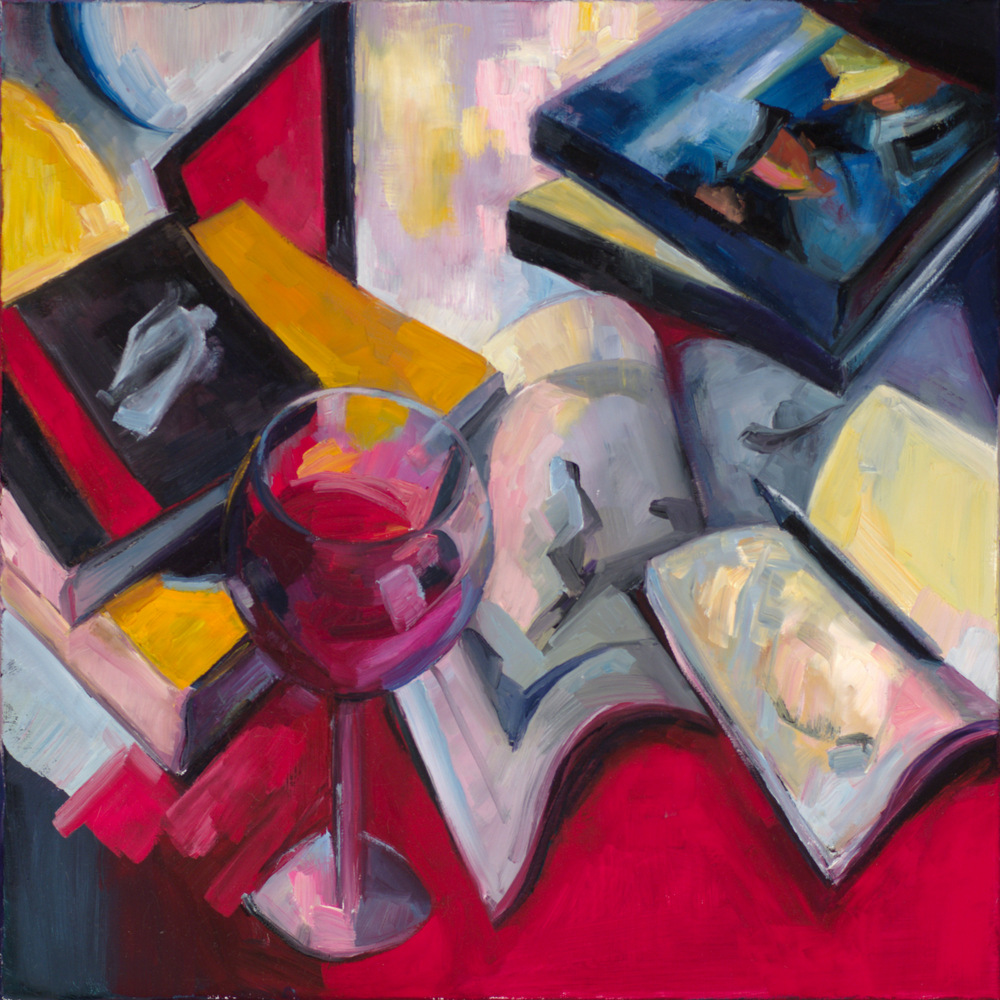
Sonnet 32: Had my friend’s news grown with the growing age. 20″x20″. Oil on linen. 2012
William Shakespeare. Sonnet 32
If thou survive my well-contented day,
When that churl Death my bones with dust shall cover
And shalt by fortune once more re-survey
These poor rude lines of thy deceased lover,Compare them with the bettering of the time,
And though they be outstripped by every pen,
Reserve them for my love, not for their rhyme,
Exceeded by the height of happier men.O! then vouchsafe me but this loving thought:
“Had my friend’s Muse grown with this growing age,
A dearer birth than this his love had brought,
To march in ranks of better equipage:But since he died and poets better prove,
Theirs for their style I’ll read, his for his love”.
Sam Alexander reading this sonnet
This is an interesting sonnet, worth re-reading to every person in the clutches of self-doubt: Shakespeare imagining a future after his death, where the “style” would progress so far that his poems would only be worth re-reading to his friend for their content (“love”), not for “their rhymes”. And it’s Shakespeare we are talking about, after all…
The painting combines an eclectic selection of books with an eclectic selection of styles, from near-realism, via impressionism, and towards bits of Mondrian in the background, as a commentary on “progression of styles”. All the stylistic play in the background notwithstanding, the still life still retains the suggestion of crowded, somewhat messy, writing desk of a scholar and reader, who might have paused with a glass of wine for a minute, to remember his deceased lover and his love distilled into rhymes.
The books are, from left to right:
Helen Vendler’s “The Art of Shakespeare’s Sonnets” and Dante’s Divine Comedy on top of it. An open book of Rembrandt’s drawings and my sketchbook partly covering it. Stephen Greenblatt’s “Hamlet in Purgatory” and T.J. Clark’s “The painting of modern life” with a fragment of Manet’s “Argenteuil” (1874) on its cover.
Reading this poem from the future, a future far beyond the one imagined by Shakespeare, it opens an an avenue for fascinating run of imagination: what would have happened, indeed, had Shakespeare’s Muse grown with the growing age? And yet, I just watched yesterday Ralph Fiennes’ 2011 movie version of “Coriolanus”, set up with tanks, and automatic guns, and whatnot, “in the place they call Rome”; a growing age still fully in the power of this rather extraordinary muse.
